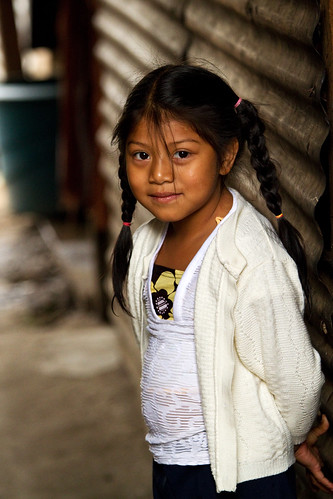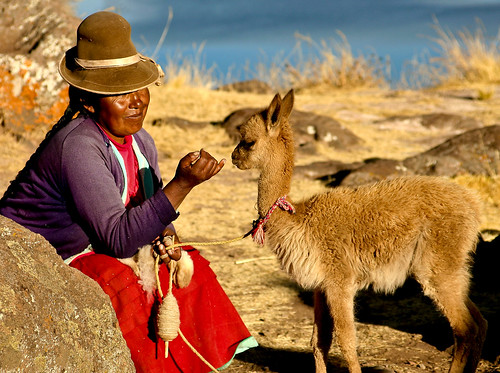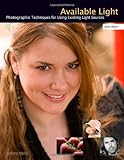Some recent portrait sessions (see them here) have led me to the realization that it is finally time to get my flash off-camera and to expand my knowledge of lighting for portraits. Since I’m currently working with a camera that doesn’t have built in remote flash triggering, this means I either need a cable or remote triggers. But which one? Expensive TTL or radio triggers? Cheap eBay triggers? A basic sync cord or a more costly TTL cord? How long? A 3′ cord for hand holding, or a longer cord for putting the flash on a stand? Or both? What situations am I going to be using them in at home and while traveling?

Jan. 2010 – Plum Island, Newburyport, MA – Canon Rebel XT, 105mm (28-105mm lens), 1/500s, f/4.5, ISO 200 – natural light at 4pm on beach
The more thought and research I put into it, the more the possibly necessary equipment began to add up: a stand for the flash, plus maybe a Justin Clamp. A stand and special arm for the reflector. Perhaps then a softbox or an umbrella. Then what else…?
I’m not a strobist. While I admire the cool things one can do with lighting and I sometimes desire to overpower the sun, it’s just not the kind of thing that gets me excited about photography. I have more of a photojournalist instinct. I’d prefer to simply work without a flash most of the time, to make the most of natural light, and to capture the reality of situations in front of me. But my experience has shown me this isn’t always possible so I decided to seek out a viable alternative for situations I assumed required flash, and to learn how to maximize my use of natural light without sacrificing lighting quality. Thankfully I quickly discovered a book that demonstrated this was possible – Available Light: Photographic Techniques for Using Existing Light Sources by Don Marr.
Unlike countless photography books that stress the importance of looking at, understanding, and making use of natural light but then leave it to the photographer to figure out, this one leads you directly there. It is short, simple, and intuitive – so much so that I didn’t write down a single note during my first reading. It shares knowledge and techniques that can easily and immediately be put to use, such as with this photo I took soon after reading it – look at that glow! 100% natural light:

Sept. 2010 – Cambridge, MA – Canon 50D, 75mm (28-105mm lens), 1/125s, f/4.0, ISO 200 – natural light at 3pm just inside the shadow-line under a concrete overpass
While we all know to photograph in the shade on a sunny day or how an overcast day is supposed to create nice, soft lighting, with this book it suddenly all clicked and I really understood why these things are so. When walking around outside, I’m typically always aware of the intensity, direction, color and quality of natural light. I now realize that in itself was not nearly enough. Now I have gained the knowledge to work with the natural light and modify it to create the softness/ hardness, direction, color, and intensity I want, whether I am working on an overcast day, at high noon, inside, outdoors, or any other type of situation. The book also makes one very aware of the existence and potential use of natural reflectors everywhere which will help give you the lighting you want: a wall, the ground, a pole. And it explains the important concept and effective practice of subtractive lighting, used to even-out or create the desired lighting instead of turning to flash to artificially add to existing lighting. The author does not just guide you to finding and creating good light in any situation, but to light that fits your subject and the way in which you wish to portray them, whether that includes soft light or hard light, even light or deep shadows, hair light or flare – or whatever. I would love to summarize the whole book in this post, but I think it’s better that you just go to your library or Amazon.com and get it!

Nov. 2009 – San Miguel Dueñas, Guatemala – Canon 7D, 135mm (70-200mm lens), 1/200s, f/4.0, ISO 1600 – natural light at 3pm diffused by the fiberglass panel ceiling/ roof of her home
I feel that this book has set me on the right path, away from what I thought was inevitable membership in the Strobist club. While the author is not against the use of flash, and certainly not against reflectors, this book offers a refreshing and viable alternative to that never-ending accumulation of equipment and techniques, and I encourage off-camera-flash fans to read it as well so they can learn to look for beautiful natural lighting alternatives that will give them as-good or even better images, before instinctively setting up their lighting equipment and knocking down the natural light in order to rebuild it artificially.
In the process of my strobist research, I came back around to the photos of Joey Lawrence (Joey L), and in particular his images of the Mentawai. They are wonderful images and beautiful portraits, but something about this project has always rubbed me the wrong way. My recent research into artificial vs. natural light has helped me to think this through and start to figure it out. I’m always disturbed when people or crews invade, er, I mean visit a culture or community like the Mentawai with a bunch of equipment and ask them or pay them to pose for photographs or footage. There’s nothing inherently wrong with it and his subjects obviously enjoyed cooperating in his project, but I simply have a different philosophical and stylistic approach – more documentary and photojournalistic. Plus I feel that there should be more of a unity of subject and technique. In other words when celebrating (or is it romanticizing?) people’s close relationship with their natural environment, one should perhaps not light them with giant, unnatural, high power artificial lights! The disharmony certainly creates stunning photos, and that kind of lighting is part of Joey L’s established style. Possibly the contrast between the natural surroundings and the artificial light helps to emphasize the dichotomy of indigenous people living in a modern world. But I just feel it would have been more interesting and authentic to make use of the unique natural light of that place when romanticizing, er, I mean portraying the people and their relationship with their environment. That being said, I am very much looking forward to Joey L’s Faces of a Vanishing World TV series (starting on September 27th on Ovation TV) in order to get a glimpse into how he works in the field and see how he creates his dramatic and undeniably stunning images.

June 2008 – Sillustani, Peru – Canon Rebel XT, 90mm (28-105mm lens), 1/800s, f/5.0, ISO 100 – natural light at 4pm on the altiplano near Lake Titicaca (that is a different lake in the background)
One of the unique aspects of different places in the world is their unique light: the light at high altitude, in a desert, equatorial light, sunset in the Cinque Terre or Santorini, and of course the diffused light of a rainforest. Why not try to capture that light as part of your images of a place? At least, for the strobists out there, I encourage you to first look at and possibly incorporate the natural light before instinctively and blindly setting up the strobes. In reality, I think it is probably a much greater challenge to find and shape the natural light, but it is a challenge I intend to take on for the long term.

March 2010 – Roosevelt Island, NYC – Canon 50D, 70mm (70-200mm lens), 1/125s, f/4.0, ISO 200 – natural light at 5pm in open area


